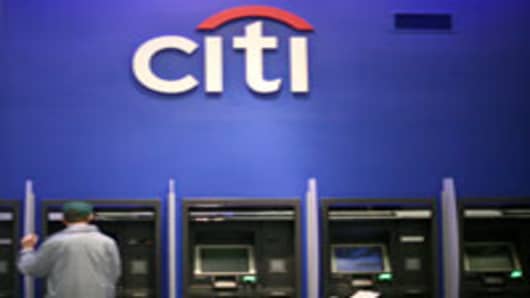How banks are updating their branch networks:
•Targeting specific markets. Citibank has 1,005 branches, vs. 5,700 for Bank of America and 6,200 for Wells Fargo. Citi's strategy is to increase its market share in the cities where it's already located, Stewart says. "Our strategy is first, to be really relevant in the top cities across the world."
JPMorgan Chase , which has 5,400 branches, is adding branches in areas where it doesn't have a large presence, such as Florida and California, says Ryan McInerney, chief executive of consumer banking. A branch opening typically creates jobs for electricians, landscapers, builders and other workers, he says. "We use an enormous amount of local resources. It's a great way to establish ourselves in the community."
•Offering advice. Bank of America is converting about 16 of its branches in Washington, D.C., and Los Angeles into "specialty stores" where customers can get expert advice on mortgages, small business and investing. If an expert isn't available on-site, customers can talk to a specialist via video-conferencing. Once it has analyzed how customers use these stores, Bank of America plans to implement some of their features in its branches, says Ann Balthis, executive for retail banking and distribution.
•Focusing on small-business owners. In recent years, U.S. Bank, which has 3,089 branches, has aggressively gone after accounts with small-business owners, who tend to need a lot more face time than other types of customers, says Kent Stone, executive vice president of consumer banking. Some small-business clients, particularly those who receive a lot of cash or checks from customers, come into their branches several times a week, he says.
Small-business accounts generate an average of six times more annual revenue than personal accounts, Stone says. Once a small-business owner opens a business account at the bank, he or she usually opens a personal account there, too, he says.
•Buying the competition.Capital One, with more than 1,000 branches, announced in June that it plans to buy ING Direct, a major online-only bank, for $9 billion. If approved by regulators, the deal will make Capital One the nation's largest online bank.
The deal would enable Capital One to capture ING's 7 million customers, who tend to be younger and wealthier than its existing customer base. It would also extend the bank's reach beyond the seven states where its branches are located. The company insists, though, that it isn't abandoning its brick-and-mortar business. "Local branch scale is still, pound for pound, the most effective way to reach a broad base of commercial small business and consumer customers to build deep banking relationships with them," Capital One CEO Richard Fairbank said in a recent conference call with analysts.
The proposed Capital One-ING merger also illustrates the risks of marrying a traditional financial institution and an online bank. Consumer groups have called on the Federal Reserve to reject the proposed acquisition, noting that attorneys general in several states have investigated Capital One for alleged misleading credit card practices. ING Direct customers, meanwhile, have expressed concern that the online bank's low fees and above-average interest rates will disappear if it becomes part of Capital One.
Capital One isn't planning any changes to ING Direct's products and services, spokeswoman Tatiana Stead says. "Customers will still enjoy competitive rates, no fees and the same online experience they've come to know and love from ING Direct."
Virtual branches
Officials at online banks, small banks and credit unions counter that technology has allowed them to provide all the services offered by a large branch network.
Some of those institutions have already benefited from the backlash against big banks. The Credit Union National Association estimates that 40,000 consumers joined credit unions on Nov. 5, designated Bank Transfer Day by activists to protest fees charged by big banks.
How small banks, credit unions and virtual banks are extending their reach:
•Shared branches. Credit unions typically have only a few branches, but most belong to a network that allows members to use branches at 6,700 locations around the country, according to the National Association of Federal Credit Unions.
•Technology. One of the most common reasons consumers visit bank branches is to deposit a check, but increasingly, consumers can do that without going to the bank, or putting the check in the mail.
Some banks allow customers to deposit checks electronically by taking a photo with a smartphone. Ally Bank, an online bank, recently launched eCheck Deposit, which allows customers to scan checks into their computers. Since it was launched in April, about 12% of Ally Bank's check deposits have come in through this tool, the company says.
•Outsourcing. USAA, a bank that serves members of the military and their families, allows customers to deposit checks at more than 2,000 UPS stores around the country.
"I suspect we'll find more situations like that, where banks think out of the box, for customers who still want to transact in person," Meara says.
Sometimes, though, branch customers come from unexpected places. Earlier this month, a small number of Occupy Oakland protesters vandalized a Wells Fargo branch in downtown Oakland. Days later, the group voted to deposit a $20,000 donation with Wells Fargo .
The group said in a statement that it plans to transfer the money to a credit union or community bank but needed a place to put the money — which will be used to bail protesters out of jail — until an account is established.
Wells Fargo declined to comment on the specific account. Says spokeswoman Richele Messick: "Wells Fargo offers a lot of value to all of our customers."


